ICSE Physics Class-10 Machine MCQ Type Questions . These MCQ / Objective Type Questions is based on latest reduced syllabus according 2021-22 session on bifurcated pattern. Main motto of MCQ Type Question is cracking the next upcoming exam of council. Visit official website CISCE for detail information about ICSE Board Class-10 Physics.
ICSE Physics Class-10 Force MCQ Type Questions
| Board | ICSE |
| Class | 10th (X) |
| Subject | Physics |
| Chapter | Force |
| Syllabus | on bifurcated syllabus (after reduction) |
| Session | 2021-22 |
| Topic | MCQ / Objective Type Question |
MCQ Type Questions for ICSE Physics Force Class-10
Question 1
The moment of a force about a given axis depends:
(a) Only on the magnitude of force
(b) Only on the perpendicular distance of force from the axis
(c) Neither on the force nor on the perpendicular distance of force from the axis
(d) On both the force and its perpendicular distance from the axis.
Answer (d) on both on the force and its perpendicular distance from the axis.
Question 2
A body is acted upon by two unequal forces in opposite directions, but not in same line. The effect is that
(a) The body will have only the rotational motion
(b) The body will have only the translational motion
(c) The body will have neither the rotational motion nor the translational motion
(d) The body will have rotational as well as translational motion.
Answer (d) The body will have rotational as well as translational motion.
Question-3 A nut is opened by a wrench of length 10cm. If the least force required is 5.0N, find the moment of force needed to turn the nut.
(a) 0.5 Nm
(b) 50 Nm
(c) 2 Nm
(d) None of above
Answer (a) 0.5 Nm
Length, r=10 cm =0.1 m
F= 5N
Moment of force= F x r= 5 x 0.1= 0.5 Nm
Question-4 A wheel of diameter 2 m is shown in Fig. 1.28 with axle at O. A force F = 2 N is applied at B in the direction shown in figure. Calculate the moment of force about (i) the centre O, and (ii) the point A.
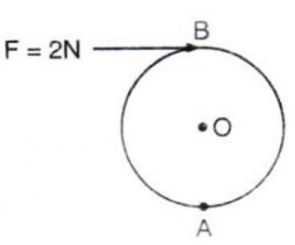
(a) 2 Nm (clockwise), 4 Nm (anticlockwise)
(b) 2 Nm (anticlockwise), 4 Nm (clockwise)
(c) 2 Nm (anticlockwise), 4 Nm (anticlockwise)
(d) 2 Nm (clockwise), 4 Nm (clockwise)
Answer-(d) 2 Nm (clockwise), 4 Nm (clockwise)
Given , F= 2 N
Diameter=2 m
Perpendicular distance between B and O =1 m
(i)Moment of force at point O
= F x r
=2 x 1=2 Nm (clockwise)
(ii)Moment of force at point A= F x r
=2 x 2= 4 Nm (clockwise)
Question -5 Two forces each of magnitude 10 N act vertically upwards and downwards respectively at the two ends A and B of a uniform rod of length 4 m which is pivoted at its mid-point O as shown. Determine the magnitude of resultant moment of forces about the pivot O.
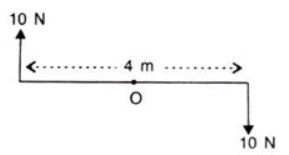
(a) 20 Nm (clockwise), 20 Nm (anticlockwise)
(b) 20 Nm (anticlockwise), 20 Nm (clockwise)
(c) 40 Nm (clockwise)
(d) 40 Nm (anticlockwise),
Answer- (d) 40 Nm (clockwise)
Given, AB=4 m hence, OA=2 m and OB =2 m
Moment of force F(=10 N) at A about the point O
= F x OA= 10 x 2= 20 Nm (clockwise)
Moment of force F (=10N) at point B about the point O
= F x OB= 10 x 2 =20Nm (clockwise)
Total moment of forces about the mid-point O=
=20 +20= 40 Nm (clockwise)
Question-6
In figure below, a uniform bar of length l m is supported at its ends and loaded by a weight W kgf at its middle. In equilibrium, find the reactions R1 and R2 at the ends.
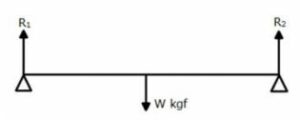
(a) w/2 kgf
(b) 2w kgf
(c) R1 + R2 kgf
(d) R1 / R2 kgf
Answer-(a) w/2 kgf
Question 7. The point of action of force on a rigid body is :
(a) Fixed point on rigid body
(b) Fixed point but can be transferred any where along the line of action of force.
(c) Fixed point but can be transferred anywhere along the direction of force.
(d) Fixed point, but can be transferred anywhere opposite to the direction of force.
Answer (b) Fixed point but can be transferred any where along the line of action of force.
Question -8. The turning effect produced in a rigid body around a fixed point by the application of force is called;
(a) turning force
(b) movement of force
(c) moment of couple
(d) none of these
Answer (b) movement of force
Question 9. The unit of moment of force in SI system is :
(a) Nm
(b) dyne cm
(c) dyne m
(d) N cm
Answer (a) Nm
Question 9 The moment of couple is mathematically the :
(a) product of one force and the perpendicular distance between two forces
(b) product of both forces and the perpendicular distance between them
(c) product of one force and tKe perpendicular distance between the point of application of force and turning point.
(d) None of the above.
Answer (a) product of one force and the perpendicular distance between two forces
Question 10. The condition for equilibrium is:
(a) the resultant of all the forces acting on the body be zero only.
(b) the resultant of moments of all the forces acting on the body about the turning point should be zero.
(c) both (a) and (b)
(d) none of the above
Answer (b) the resultant of moments of all the forces acting on the body about the turning point should be zero.
Question -11. A body is acted upon by two unequal and opposite forces along different lines of action of force. The body will have
(a) only rotatory motion
(b) only translatory motion
(c) both (a) and (b)
(d) neither (a) nor (b)
Answer (a) only rotatory motion
Question12 A force F acts on a rigid body capable of turning around a fixed point. The moment of force depends upon
(a) magnitude of force F
(b) magnitude of perpendicular distance between the point of action of force and the turning point
(c) both (a) and (b)
(d) none of these
Answer (c) both (a) and (b)
Question 13. The centre of gravity of a cricket ball is at:
(a) its geometric centre
(b) at its bottom touching the ground
(c) its top most point
(d) at any point on its surface
Answer (a) its geometric centre
Question 14 A body is describing a uniform cicular motion. Which of the following quantities is/are constant
(a) speed
(b) acceleration
(c) velocity
(d) both (a) and (b)
Answer (a) speed
Question 15. In a uniform circular motion :
(a) speed of body continuously changes because the direction of motion changes
(b) velocity of body continuously changes because the direction of motion changes
(c) the motion of body is accelerated
(d) both (b) and (c)
Answer (d) both (b) and (c)
Question 16. A force of 50 dynes acts on a rigid body, such that the perpendicular distance between the fulcrum and the point of application of force is 75 cm. Calculate the moment of force.
(a) 3750/2 dyne cm
(b) 3750 dyne cm
(c) 75/50 cm
(d) both (a) and (b)
Answer : 3750 dyne cm
Force F = 50 dynes
⊥ distance = 75 cm
∴ Moment of force = F × ⊥ distance
= 50 × 75 = 3750 dyne cm
Question 17 -Calculate the length of the arm of couple, if a force of 13 N produces a moment of couple of 14.3 Nm.
a) 14.3 + 13 dyne cm
(b) 14.3 – 13 dyne cm
(c) 14.3 / 13 dyne cm
(d) 14.3 x 13 dyne cm
Answer: (c) 14.3 / 13 dyne cm
Question 18 Two forces F1 and F2 are applied on a circular body such that moment of couple is 9 Nm in CWD. Calculate the radius of circular body.
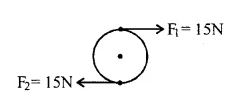
(a) 30 cm
(b) 15 dyne cm
(c) 9 cm
(d) data incomplete
Answer : (a) 30 cm
Question 19. A uniform metre scale balances horizontally on a knife edge placed at 55 cm mark, when a mass of 25 g is supported from one end. Draw the diagram of the arrangement. correct sequence to Calculate mass of the scale.
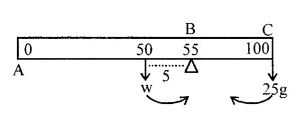
(a)W × (55 ) = 25 × (100 – 55)
(b)W × (55 – 50) = 25 × (55)
(c)W × (55 – 50) = 25 × (100 – 55)
(d) W × (50) = 25 × (100 )
Answer : (b) W × (55 – 50) = 25 × (100 – 55)
As the metre scale is balanced at 55 cm mark i.e. large arm is balanced by arm BC and 25 g is suspended at one end i.e. at 100 cm mark
∴ Anticlockwise moment = clockwise moment
W × (55 – 50) = 25 × (100 – 55)
W = 25 × 45 / 5 = 225g
–: End of ICSE Physics Class-10 Machine MCQ Type Questions :-
-: also visit :-
ICSE Class-10 Text book Solutions, Notes , Syllabus, Paper, Notes
Please share with your ISC friends if it is helpful
thanks

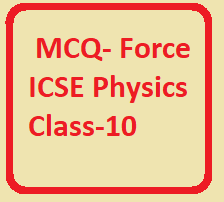
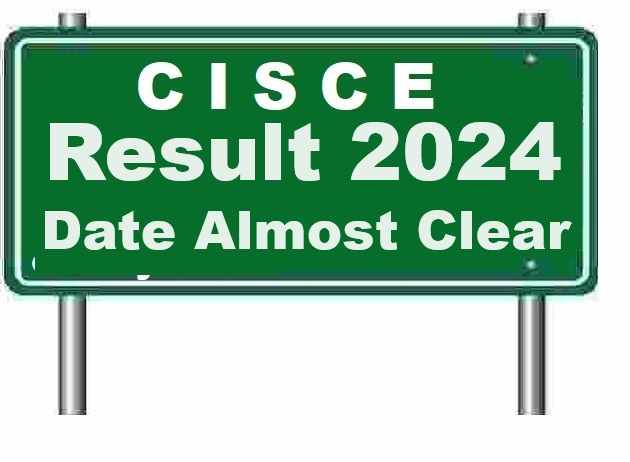
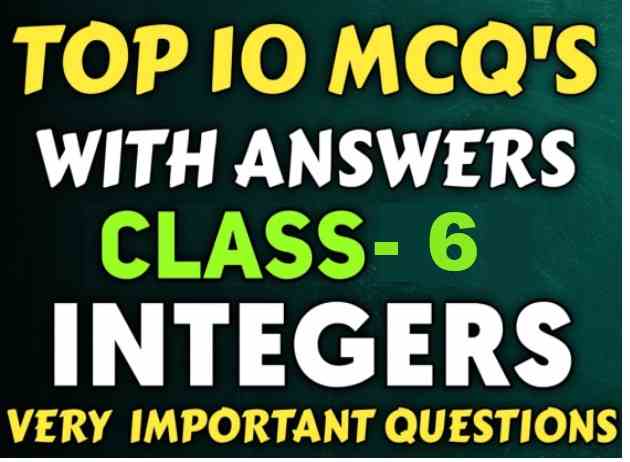
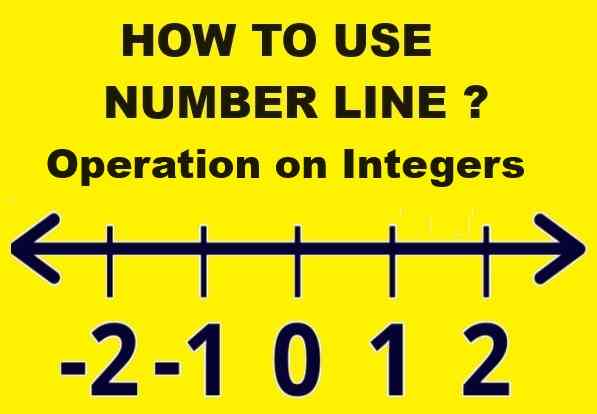
Aakhir kar
ok
Good
thanks and keep in touch
Question no 19 option is wrong correct answer is (c) you types as (b) please do correction for other students they will depend on you in the period of online school exam and MCQ types bord exam
update soon if officially ans key available
Nice question it was very helpful
thanks
Nice it helped me in my exams
keep in touch
Thanks for sharing this post its really helpful for me me also preparing Physics Class 10 MCQs